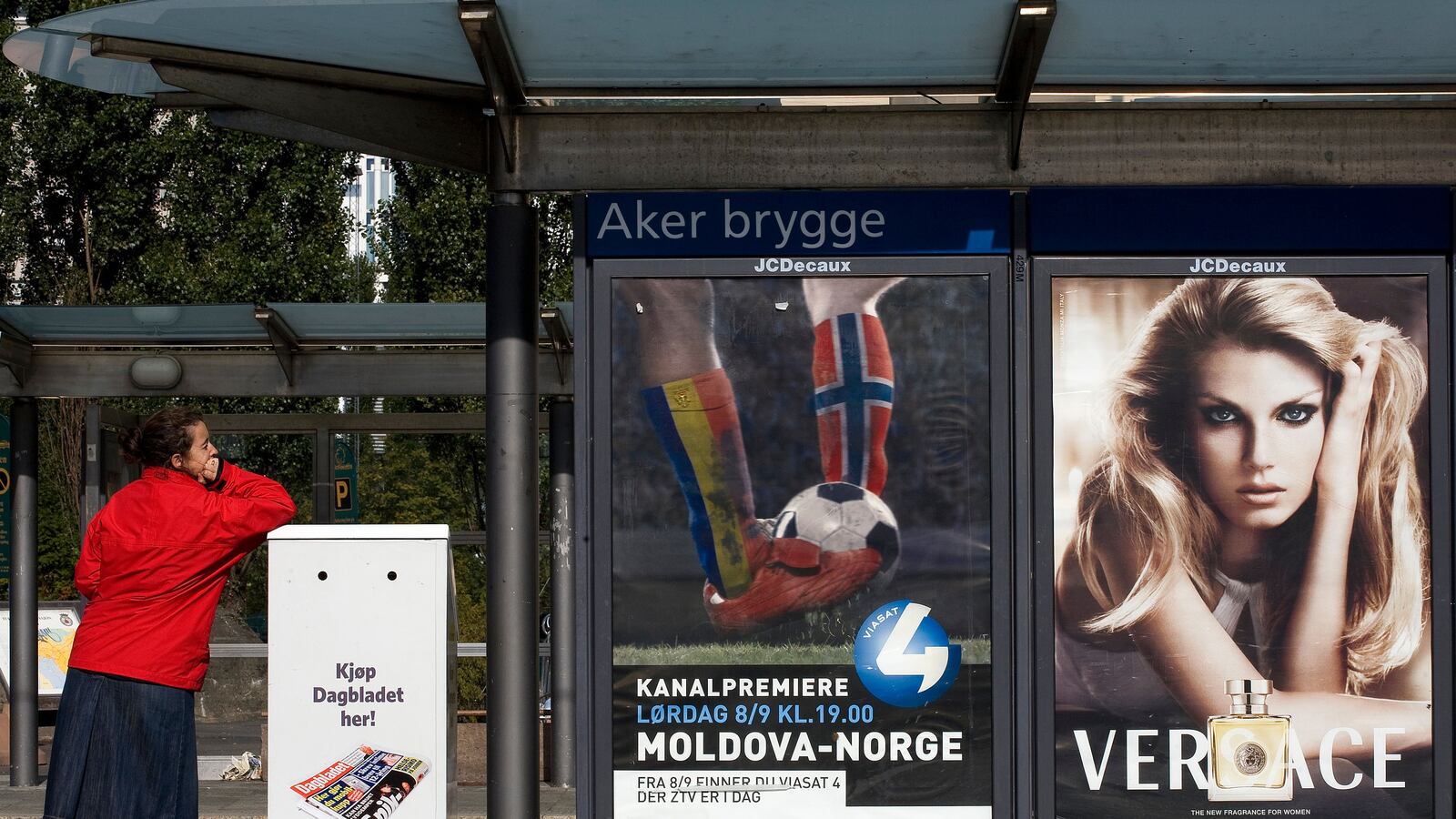Buff beach boys and bathing beauties be gone! So say new municipal edicts in Norway’s third-largest city, which officially put the kibosh on images of scantily clad models with super physiques in public advertising spaces.
This battle against beautiful bods wasn’t driven by conservative family values, however, but by an attempt to combat the negative body image issues that officials say have become prevalent in the Nordic nation.
Under the new legislation that was ushered in with an 8-3 vote last week, “advertising that conveys a false image of the model/models’ appearance and contributes to a negative body image” is forbidden in Trondheim, a picturesque municipality of some 187,000 people. And although the region boasts many nearby beaches and swimming areas, images of swimsuit-sporting hotties will no longer grace billboards, buses, and other public spaces.
City officials say that the guidelines are a necessary step in the fight against prevalent and potentially damaging images of corporeal perfection that can erode the self-esteem of those who don’t meet their unrealistic (and Photoshopped) standards. Basically, the rest of us.
“In Norway and in most Western countries, there has been increased pressure, in particular on youngsters, to have the ‘perfect body,’” Ottar Michelsen, a leftist legislator among those who proposed the ban, told The Daily Beast. “And the ‘perfect body,’ as brought to you by advertisers, is an unrealistic ideal because it is created through manipulated pictures.”
Michelsen said that the new restrictions will come into effect at the beginning of 2018, and will be included in public contracts, meaning that a company awarded a tender will be expected to keep such unrealistic ideals out of any forthcoming ad campaigns.
However, the measure’s critics say it’s an example of overregulation, and would be hard to actually enforce.
“It is important to combat body pressure, but we cannot prohibit and regulate our way to the development of the society we want in all areas,” conservative legislator Yngve Brox told the Norwegian daily NRK.
Michelsen disagrees, and believes that the regulations are secondary to the message they are sending.
“By putting these restrictions in place, we are creating a debate, “ he said. “I think that is maybe more important than the restrictions themselves.”
While it is too early to know whether such regulations will boost body confidence among young people, one American body image expert feels that the United States could take a cue from comparatively tiny Trondheim.
“The more Europe takes a stance on this, in some ways, the worse America looks,” Beth Mayer, a Licensed Independent Clinical Social Worker and executive director of the Massachusetts-based Multi-Service Eating Disorders Association, told The Daily Beast. “Just because we are a large country doesn’t mean we can’t take a stand. I think that the language we use around beauty and body size is very dangerous in this country.”
Mayer acknowledged that while it was too soon to judge the effectiveness of Trondheim’s new rules against flawless figures, the city had taken an important step.
“Sometimes legislation is implemented to give a clear message that this is not acceptable,” she said. “I think the message is people will try to do something to stop the proliferation of negative images.”
Back in Trondheim, Michelsen stressed that images of bikinis and briefs are not off limits, provided they haven’t been retouched beyond recognition.
“We do not want images that give us an incorrect picture of how the models actually look,” he said. “As long as the picture is not manipulated, it would be okay.”
So while images of beachwear are not actually banned from Trondheim’s billboards and bus shelters, those featured in them may begin looking less like paragons of perfection and more like the average Joe and Jane—or Jan and Eva, if you’re Norwegian.






